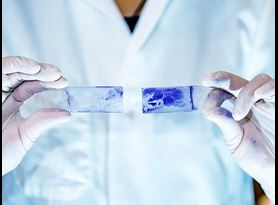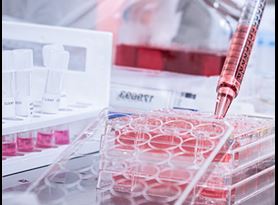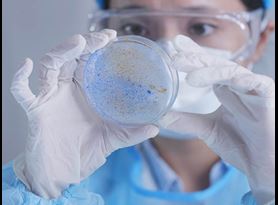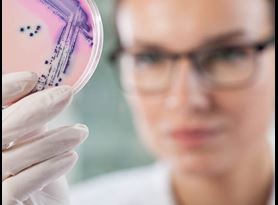With more than 30 years of experience supporting developers, manufacturers, and marketers of treated articles, Element’s consultative antimicrobial and regulatory experts can help you successfully navigate the complex regulations for making claims for treated articles.
Items treated with antimicrobial products intended to protect the article itself are considered to be treated articles. Examples of treated articles include textiles, paints, and rubber gloves. Element has extensive experience testing a wide variety of treated articles to established methodology. Leading organizations partner with us to ensure their products meet the criteria for making claims.
We can test products to methods that are not listed on our website. If you do not see the method you are interested in, connect with us today to explore alternative methods. With decades of experience in microbiology and virology, our team can develop custom protocols to meet your specific needs.
Antimicrobial treated article testing
Element tests treated articles to the following standard test methods:
ASTM E2149 Standard Test Method for Determining the Antimicrobial Agents - In this method, treated test samples are placed in a laboratory flask containing a dilute suspension of test organism, commonly Escherichia coli. The flask is placed onto a wrist-action shaker and shaken for a desired exposure time, typically 1 hour. Following exposure, a sample of the test organism suspension is removed quantitatively assayed for survivors. The resulting plates are incubated, the number of survivors is enumerated and a percent reduction is determined for the test flask as compared to the untreated control suspension.
No regulated reduction limits currently exist for general antimicrobial claims made using this method.
ASTM E2180 Standard Test Method for Determining Antimicrobial Activity in Polymeric or Hydrophobic Materials - In this method, treated test samples are inoculated with the test organism mixed with in a semi-solid agar “slurry” to facilitate surface interaction. The test organism is allowed to expose on the surface of the treated material typically for 24 hours. Following exposure, the sample is neutralized, the surface is washed and the sample is quantitatively assayed for survivors. The resulting plates are incubated, the number of survivors is enumerated and a percent reduction is determined for the test sample as compared to the untreated control sample.
No performance criteria currently exist for general antimicrobial claims made using this method. Common test organisms utilized in this method include Staphylococcus aureus, Pseudomonas aeruginosa and Klebsiella pneumoniae.
AATCC 100 Assessment of Antibacterial Finishes on Textile Materials - In this method, treated test samples and untreated control samples are inoculated with a representative test organism, commonly Staphylococcus aureus and Klebsiella pneumoniae. The test organism is allowed to expose to the test material at an elevated temperature, typically for 24 hours. Following exposure, the samples are neutralized and quantitatively assayed for survivors. The resulting plates are incubated, the number of survivors is enumerated and a percent and log10 reduction is determined for the treated test material as compared to the untreated control material.
No regulated reduction limits currently exist for general antibacterial claims made using this method.
Mildew Fungistatic Test for Fabrics or Hard Surfaces - In this method, ceramic tile or cotton muslin carriers are treated with the product and the carriers are allowed to dry. Following drying, the carriers are inoculated with Aspergillus niger. The treated carriers are incubated in a high humidity environment and are visually rated for mold growth.
For a product to be considered an effective mildew fungistat, the treated surfaces must demonstrate no mold growth following incubation.
JIS Z 2801/ISO 22196- Japanese Industrial Standard (JIS) Z 2801 Test for Determining Antimicrobial Activity - The purpose of this test is to determine the antimicrobial activity on the surface of a product following the Japanese Industrial Standard (JIS) Z 2801 method. This method is also in compliance with the ISO 22196 International Standard.
An aliquot of test organism is exposed to a surface-bound antimicrobial agent. After exposure, the material is neutralized and assayed for survivors. Appropriate culture purity, sterility, initial suspension, stainless steel control and neutralization controls are performed.
This study is designed to examine the rate-of-kill of a test substance following exposure to the test organism suspension to the test carrier. Results are expressed in percent and log reduction of the test organism. Minimum percent and log reduction values do not exist to specify a “passing” or “failing” test substance, passing or failing is determined by the Sponsor in many cases.
The Element advantage
Element has been the trusted partner for leading developers, manufacturers, and marketers of antimicrobial treated articles for more than three decades. A leader in antimicrobial testing, our consultative scientific and regulatory experts stay up-to-date on market trends and regulatory guidance. Confidently and successfully navigate regulatory requirements and treated article product registration with the support of Element.
For more information about Element’s microbiology testing for treated articles or to learn more about our antimicrobial treated article testing microbiology lab, contact us today. Additionally, if the method you are interested in isn't listed, please reach out. We'd love to discuss it further and get more information about your project.
Learn more

Microbiology Testing
Element offers a diverse array of microbiology testing services and can serve clients from early-stage antimicrobial product development and non-GLP screen testing all the way through GLP testing for submission.

Virology Testing
Element offers GLP and cGMP virology testing options to serve our clients in the antimicrobial and pharmaceutical industries.

About Element Eagan
Element Eagan is the premier contract antimicrobial testing laboratory and expert partner to the developers, manufacturers and users of antimicrobial pesticide and biocide products. We have more than 30 years of experience generating GLP-compliant data.

Client Portal
Secure 24/7 access to your test result information, which you can download directly to your information management system.

